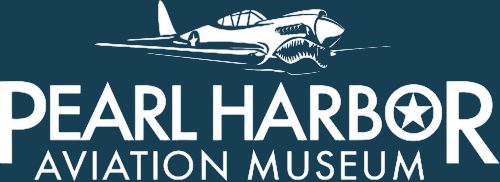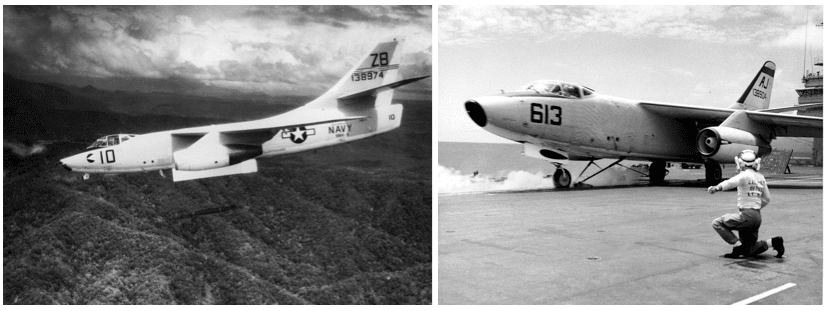Posted on March 12, 2012
Nuclear Strike, Tanker, Reconnaissance, and Electronic Warfare Aircraft

Figure 1: Our Skywarrior (S/N 144867) in its Original Form
Key Points
Called the A3D Skywarrior from 1956 to 1962. Redesignated the A-3 Skywarrior in 1962.
First intended use: nuclear attack bomber. Later used as tactical strike bomber, electronic warfare, reconnaissance, and tanker aircraft.
Called “the Whale,” it was the heaviest aircraft every to take off from an aircraft carrier. However, only slightly heavier than the later F-14.
Served extensively in Vietnam, initially as bombers but later in electronic warfare, reconnaissance, and tanker roles. It was used most heavily as a tanker.
Usually had a crew of three—pilot, bomber/navigator, and rear gunner. Most electronic warfare versions added four electronic warfare specialists, called “crows” or “ravens”
Last used in Desert Strom, 1991.
Served as the basis for the USAF B-66 Destroyer bomber, which replaced the B-26.
Our aircraft, S/N 144867, served as a bomber and navigator trainer until it was bailed to Hughes and later Raytheon for the testing of radar systems for new aircraft, including the F-14A and F-14D. During its later testing life, it was given civilian registration numbers—first N577HA and later N877RS
To come to the museum, our aircraft first flew from Van Nuys to NAS North Island in San Diego. The USS Bonhomme Richard assault ship carried it to Pearl Harbor. It arrived at Pacific Aviation Museum on March 7, 2012.
The Skywarrior
At the end of World War II, the Navy wanted to develop a nuclear strike capability. Missile submarines were far off, so the Navy decided to procure a carrier-based aircraft capable of carrying a 10,000-pound nuclear bomb over a radius of 1,000 nm. This big new machine would operate from carriers in the new USS United States class and would weight about 100,000 pounds. Betting that the United States would never be built, Ed Heinemann at Douglas proposed an aircraft of “only” 70,000 pounds, which would still be huge by existing carrier aircraft standards. The design became the three-person swept-wing, twin-engine A3D Skywarrior. In 1962, under the new Department of Defense classification scheme, the Skywarrior was redesignated the A-3. Given its size, it was quickly nicknamed “the Whale.” To this day, the A3D has the record for the heaviest aircraft to be launched from a carrier, although the F-14, which appeared many years later, was not too much smaller.
Figure 2 shows an A-3 in bomber configuration. The aircraft on the left is dropping a bomb, although it is difficult to see in the picture.

Figure 2: A3D Bomber Version
The Skywarrior crew of three sat in a single glazed cockpit. The pilot and bombardier-navigator-copilot sat in the front of the cockpit. Behind them was the rear gunner, who operated 20 mm radar-directed cannons. The crew had no ejection seats. This was a serious problem because crash-landing a jet aircraft is not a good idea, and many crash landings occurred with the aircraft. It was sometimes said that A3D stood for “All 3 Dead.”

Figure 3: Crashed Skywarrior
The Skywarrior was very heavy for a carrier aircraft—70,000 pounds at normal take-off weight and 80,000 pounds at maximum take-off weight. Although catapults could handle the big aircraft, the A-3 could also use JATO thrust bottles to help it take off.

Figure 4: Skywarrior with JATO Bottles for Takeoff
In 1964 and 1965, the Skywarrior conducted bombing raids in Vietnam—one of the first Navy aircraft to do so. It served in round-the-clock bombing raids on North Vietnam, carrying up to 12,000 pounds of bombs. However, it soon switched to the electronic warfare, reconnaissance, and tanker roles. The A-3 was most important as a tanker in Vietnam. Skywarrior tankers saved many damaged aircraft by giving them enough fuel to make it home.

Figure 5: Skywarrior Tanker
Skywarriors were also used for reconnaissance during Vietnam. The Whale’s big belly could carry multiple cameras. However, in this role, as in bombing, the Skywarrior was superseded by other aircraft.

Figure 6: Reconnaissance Skywarrior with Cameras
The Skywarrior found a solid niche in electronic warfare, both offensive and defensive. “Electronic Whales” would often accompany strike packages of aircraft, shielding them from ground radar. They also listened in to enemy transmissions. For electronic warfare, the crew of three increased to seven. The four additional crew members sat in the bomb bay area and operated the electronic equipment. They were commonly called crows or ravens. Some later versions dispensed with the crows in order to make more room in the more equipment. Automation had replaced the human operators. Although better electronic warfare aircraft superseded the A-3, the EA-3B version was operated by front line Navy units until 1987, and U.S. Navy Reserve electronic whales were used in Dessert Storm in 1991. By the end of that year, however, all Skywarriors were gone from the Navy’s inventory.
After the Vietnam War, use of the A-3 slackened. Many A-3s became fire bombers, test aircraft, or were cocooned in the AMARC “boneyard.” As test aircraft, they were primarily sold to civilian contractors, including Raytheon and Hughes. Test vehicles often had “nose jobs”—new nose cones to test radar for newer aircraft. The following four figures show our A3D with different nose jobs. Figure 6 shows our A3D in 1989. It was testing the AN/AWG-71 radar to be used on the F-14D. (The F-14 in Hangar 79 is an F-14D.) Figure 8 shows our aircraft with the bulbous nose it had when it arrived at Pacific Aviation Museum.

Nose Job” for Testing the AN/AWG-71 Radar in 1989

Figure 8: Converted A3D Firing a Phoenix Missile

Figure 9: Our A3D on its Final Flight, from Van Nuys to NAS North Island (with Civilian Registration Number N877RS)

Figure 10: Our A3D Being Loaded on the USS Bonhomme Richard at NAS Ford Island for Delivery to Hawaii
The USAF B-66 Destroyer
As the Navy was developing the A3D, the Air Force saw the need for a medium-range light bomber to replace the B-26. The A3D looked perfect for the task. The USAF had Douglas develop an Air Force version of the Skywarrior. This was the B-66 Destroyer. The Air Force expected an easy conversion by removing the folding wings and other specialized Navy equipment. In practice, the conversion was rather difficult. Designed to fly at low altitudes, the structure had to be strengthened. Strengthening was also needed because the Air Force insisted on ejection seats. Despite delays, the B-66 joined the Air Force in 1956—the same year that the A3D joined the Navy. The USAF procured 294 Destroyers; this was actually slightly more than the 282 Skywarriors purchased by the Navy.


